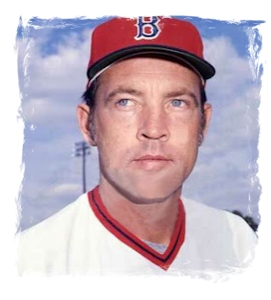 |
Stanley Wilson Williams was born on September 14, 1936 in Enfield, N.H. The family moved to Colorado when he was 2 years old, and he grew up on the east side of Denver. He would eventually reach a height of 6’-5″, but he was known as “Big” Stan Williams even in East Denver High School, where he played baseball, basketball and football. He gained a reputation as a strikeout pitcher, thanks to performances like his 1-hit, 20-strikeout game against York, Neb., in an American Legion game in 1953. Newspapers were calling him the fastest Legion pitcher since Rex Barney. Stan signed with the Brooklyn Dodgers organization after graduation, and the 17-year-old started his pro ball with the Shawnee Hawks of the Sooner State League. He made his presence known the following season with the Class-B Newport News Dodgers of the Piedmont League. He went 18-7 with a 2.42 ERA and struck out 301 batters in 242 innings. He tied a Piedmont League record set by Johnny Vander Meer when he struck out 20 Lynchburg batters in a game and broke his record for most strikeouts in a season. The only question about the teenager’s ability was his control. In one game, he threw a one-hitter against the York White Roses. He ended the year with 158 walks, or an average of 5.9 per 9 innings. Now that he was a top Dodgers pitching prospect, Stan was moved to the higher levels of the minors for 1956. However, he didn’t fare particularly well with the AAA St. Paul Saints or the AA Fort Worth Cats. He got back to his winning ways in 1957 with the Saints of the American Association. The relocated Los Angeles Dodgers invited Stan to their spring training camp in 1958. He started the season in St. Paul but was promoted to the majors in late May. Manager Walt Alston never showed much patience with him, as Stan was still prone to giving up too many walks. The Dodgers found themselves competing for the NL pennant in 1959, and Stan was given relatively few opportunities to contribute and became the odd man out in the pitching staff. The Dodgers beat the “Go-Go” Sox in the Series, and Stan threw 2 scoreless innings in Game 5, a 1-0 loss. The Dodgers won the Series in six games. Stan became part of the Dodgers starting rotation from 1960 onward. He was part of a brilliant and young pitching staff that included Sandy Koufax, Don Drysdale and Johnny Podres. He started 30 of his 38 appearances in 1960. He was one of only two NL pitchers to top 200 strikeouts, as teammate Koufax led the league with 269 K’s. Stan's ERA crept upwards since his All-Star season in 1960. In 1961, it rose to 3.90, and it increased further to 4.46 in 1962. When the season ended, he was traded to the New York Yankees for first baseman Bill “Moose” Skowron. The Yankees were in need of pitching help, while the Dodgers needed a good right-handed hitter. Both teams got what they want and won their respective pennants in 1963. Stan went from one impressive pitching staff to another, as the ’63 Yankees featured two 20-game winners with Whitey Ford and Jim Bouton. Stan went through a rough period of several years, thanks to a sore arm. He won just one game for the Yankees in 1964 and was purchased by the Cleveland Indians in 1965. He made three appearances for Cleveland in relief in 1965, allowing runs in all of them. He spent most of that year and all of the next in the minors and was put on the inactive list in April of 1966. It looked like his career was over. And then, in the middle of 1967, he came back to the majors and looked just as unhittable as he was in his prime with the Dodgers. Stan and whatever his pitch repertoire was won 13 games for Cleveland in 1968. His record fell to 6-14 in 1969, though he also picked up 12 saves. He was traded to Minnesota. The Twins kept him in the bullpen in 1970, and he was brilliant, with a 10-1 record, 1.99 ERA and 15 saves. He was part of a dominating bullpen duo with his former Dodgers teammate Perranoski. Stan was a little less effective in 1971, as his ERA rose to 4.15 with the Twins, and he wasn’t used in save situations as much. He was traded to the Cardinals late in the season and went on a final dominant run. In 10 relief appearances, Stan won three games and had a 1.42 ERA. The Cardinals released him at the end of the season, and he played in the Angels and Red Sox organizations before pitching his final MLB games in the summer of 1972. After three appearances with the Red Sox and a 6.23 ERA, he was released. He pitched a couple of games for the AA Bristol Red Sox in 1974, when he was 37 years old. He was working as the team’s manager, and he was forced to activate himself after a series of injuries to his pitchers. One of those starts was a no-hitter his first in professional baseball. He rejoined the Red Sox in 1975 as a pitching coach. He held that role off and on with the Red Sox, White Sox, Yankees, Reds and Mariners through the 1999 season. After that, he remained in the game as a scout for Tampa Bay and Washington until retiring from the game. Between his time as a player and a coach, he made six trips to the World Series and won two championships (the Dodgers in 1959 and the Reds in 1990). Stan Williams was inducted into the Colorado Sports Hall of Fame in 2013. He was hospitalized and was in hospice care for cardio-pulmonary illness and died on February 20, 2021. |
|||||
